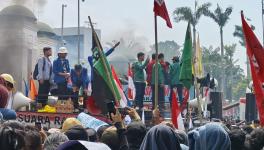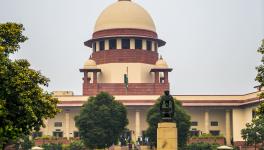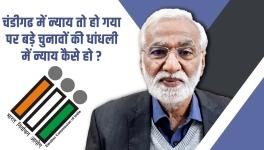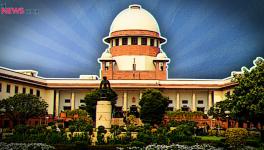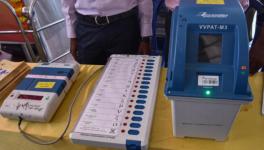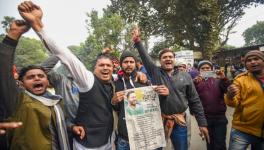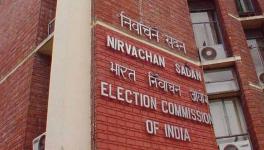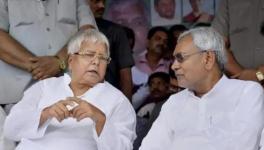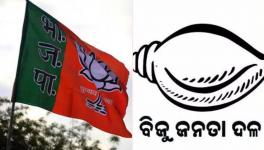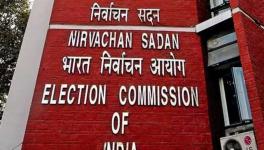Does Homogeneity Drive Politics in Poll-Bound ‘Hindi Belt’?
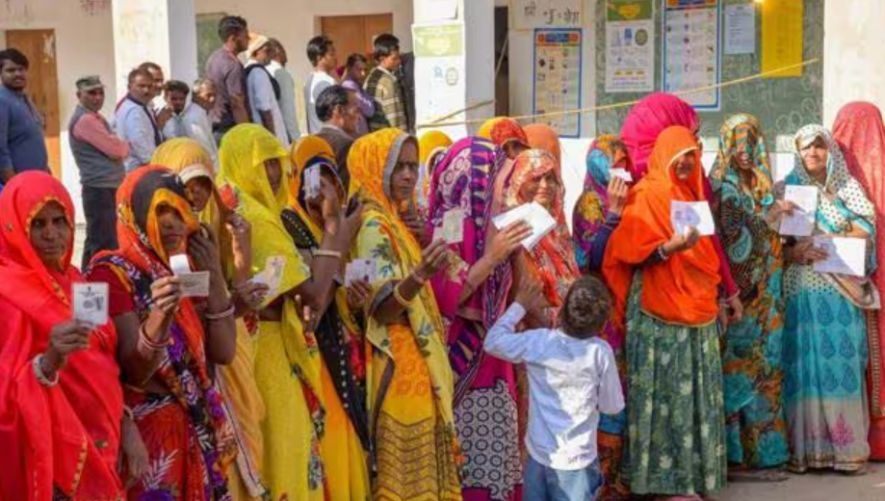
Image for representational purpose. Credit: PTI
Five states are set for Assembly elections in November. In each, the social fabric or population composition and economic conditions are among the prime factors in determining political outcomes. This includes the caste and religious composition of the population, which, some would say, still remains a crucial driver of voting trends. In the Indian electoral context, these factors matter after—or sometimes before—the economic condition of the region.
Three so-called Hindi belt states are among the poll-bound provinces, namely, Chhattisgarh, Rajasthan, and Madhya Pradesh. They are more or less similar in terms of their socio-economic and political situations. With the six charts below we can try to better understand the similarities and attempt to decode whether similar socioeconomic conditions lead to similar political scenarios. Or, is it that the similar political preferences of people in these states determines their similarities on other fronts?
Workers’ share in agriculture remained above the national average; Madhya Pradesh scores on employment numbers
In India, 45.76% of the total workforce is dependent on agriculture, forestry, and fishing. That rises to more than 50% in the poll-bound ‘Hindi belt’ states. In Chhattisgarh, 62.61% of usual workers are engaged in agriculture, forestry, and fishing to make a living. In Rajasthan and Madhya Pradesh, 54.79% and 59.78% of workers respectively are engaged in this sector.
These states are ranked in the top three by their share of workers engaged in agriculture if one were to exclude the small states such as Arunachal Pradesh and Himachal Pradesh. These two small states place second and third in terms of employment in agriculture-related activities.
However, agriculture does not contribute significantly to the gross value addition of any state as the produce from it is less valuable than in any other industry, particularly services. The share of workers in the service sector accounts for 27.75% at the national level. However, Chhattisgarh, Rajasthan, and Madhya Pradesh lag far behind in terms of their service economy.
Chhattisgarh has only 18% of workers engaged in the service sector. Rajasthan and Madhya Pradesh are only marginally better. The service sector includes health, information, education, real estate, and administrative services, among others.
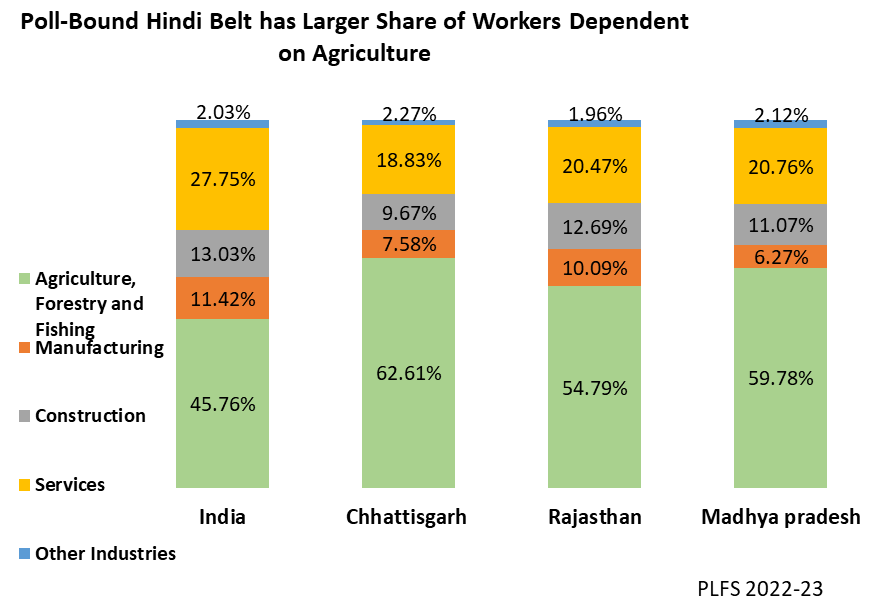
However, Chhattisgarh Chief Minister Bhupesh Bhaghel and Chief Minister Shivraj Singh Chauhan in Madhya Pradesh have successfully maintained the unemployment rate in their respective state at below the national average. Rajasthan surpassed the nationwide unemployment rate of 3.20% by 1.20 percentage points.
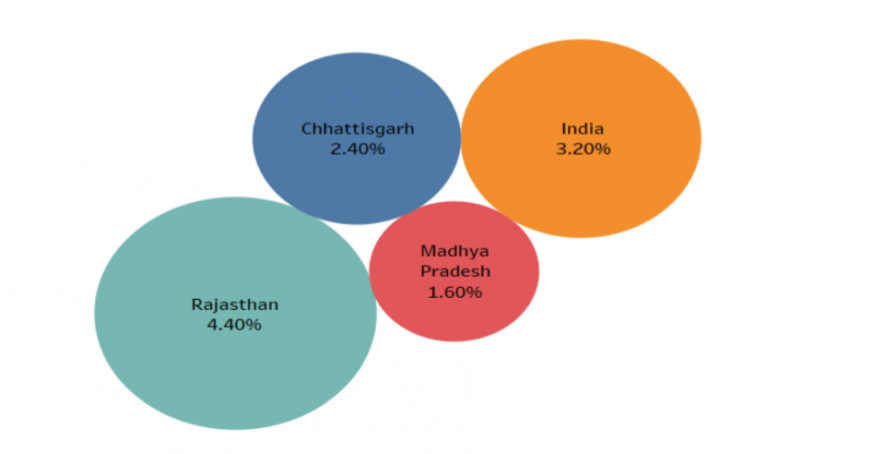
The unemployment rate in Rajasthan is higher than the national average.
Absolute majority of Hindus, fragmented by caste structure
The demographic composition of any state plays a crucial role in shaping its political trajectory, with religion and caste often the focal point. Recent political developments have brought Hindutva to the spotlight, however, the significance of caste in Indian politics cannot be overlooked, given its deep-rooted history.
Hindus as a share of the population remained the absolute majority in all three states. Chhattisgarh has the highest share of Hindus with 96.6% among all states, However, going by the caste structure, the state’s social fabric is far from monolithic. In Chhattisgarh’s population, the communities that form the Other Backward Classes or OBCs hold the largest share with 44.6% of the total population. Rajasthan and Madhya Pradesh share a similar tale.
Notably, the general category population constitutes the smallest proportion, excluding those unaware of their caste category. Among these three states, Muslims hold the highest share of the population in Rajasthan with 7.8%.
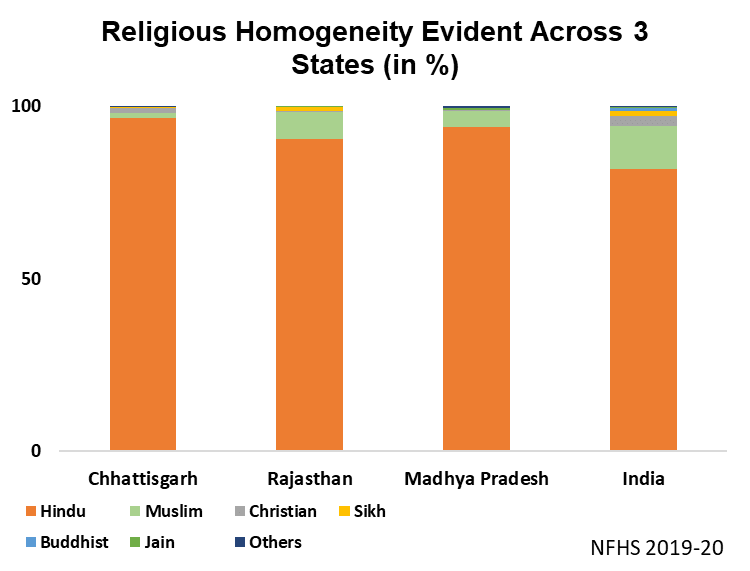
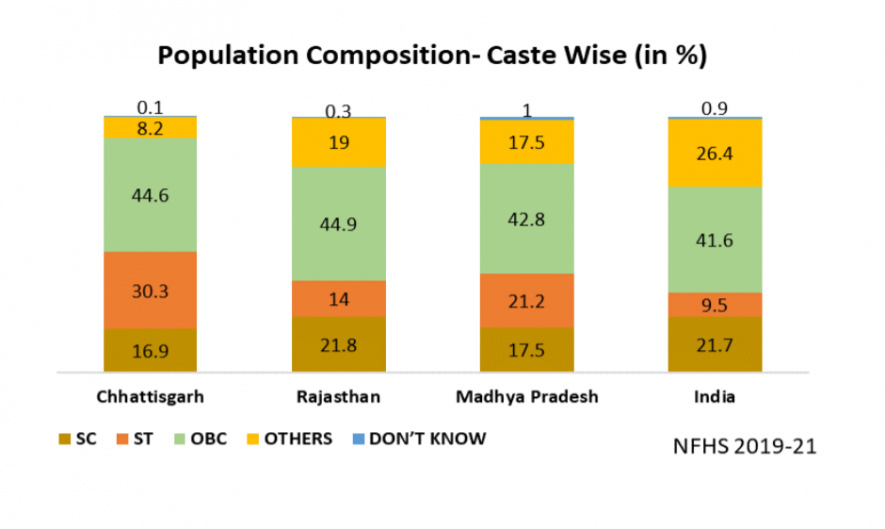
Elections largely contests between two national parties
Not only has power alternated between the two parties, but more than 70% of votes went to only two political parties since 2003. Despite a significant number of parties being in the fray, elections in these states have largely been contested between two parties. All three states usually voted for the Bharatiya Janata Party and the Indian National Congress.
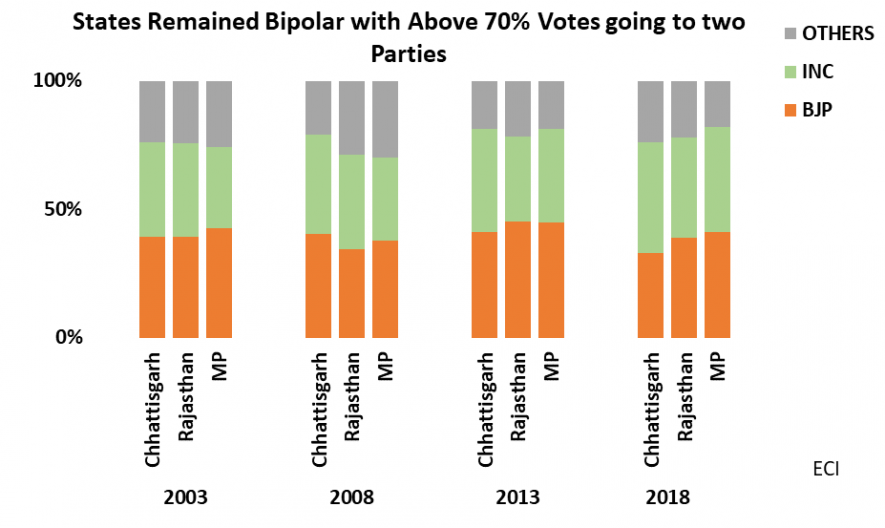
The political landscape of these states establishes one more major trend. Out of the total women who reached the respective assemblies since 2003, nearly half were elected from reserved seats. Chhattisgarh’s voters, for instance, elected 39 women across the last four Assembly elections, and 20 of them were from reserved seats.
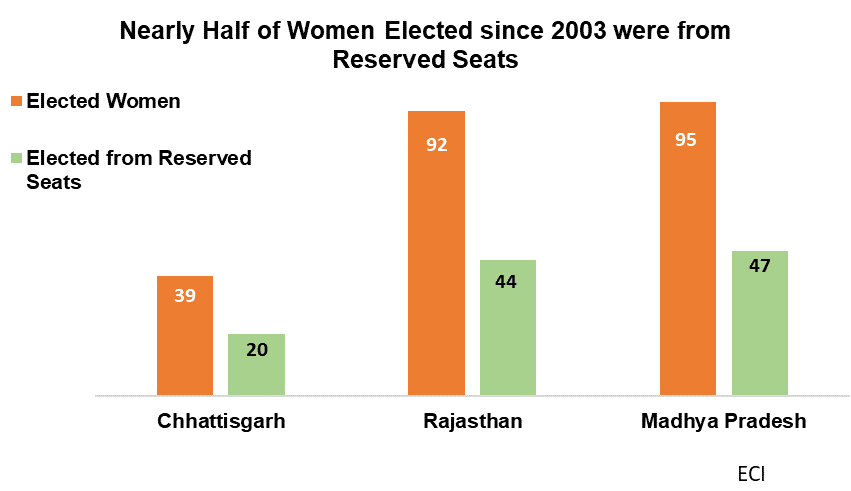
The author is an independent journalist. The views are personal.
Get the latest reports & analysis with people's perspective on Protests, movements & deep analytical videos, discussions of the current affairs in your Telegram app. Subscribe to NewsClick's Telegram channel & get Real-Time updates on stories, as they get published on our website.









